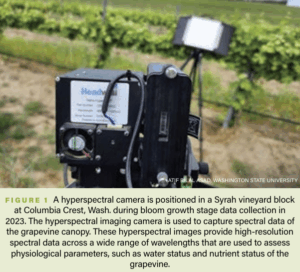 KEY POINTS
KEY POINTS
- Grapevine leaf blades and petioles collected at bloom and veraison are the main sampling methods for monitoring vineyard nutrition. Critical values are those that relate to a threshold of nutrient sufficiency or deficiency that relates to vine growth, yield or visual symptoms. Critical values are informed by past research, current studies and local expertise.
- Tissue sampling for vineyard nutrient status is the gold standard but falls short in providing growers with information about vineyard variability and leads to imprecise nutrient management.
- Sensors are necessary tools for precision agriculture applications. Hyperspectral cameras have been developed to measure plant stressors, and these are being evaluated for grapevine canopies as indirect measures of vine nutrient status for key nutrients, including nitrogen and potassium. Sensors allow entire vineyards to be measured, and data are used to generate vineyard maps that allow growers to manage blocks based on variability, rather than based on the average of a few tissue samples.
- Satellite imagery can be used to identify sampling locations in vineyards based on high, medium and low vigor status, thereby reducing the number of samples necessary to reflect vineyard block variability. The sampling method may soon be integrated in the My Efficient Vineyard (MyEV) platform for open-access use.